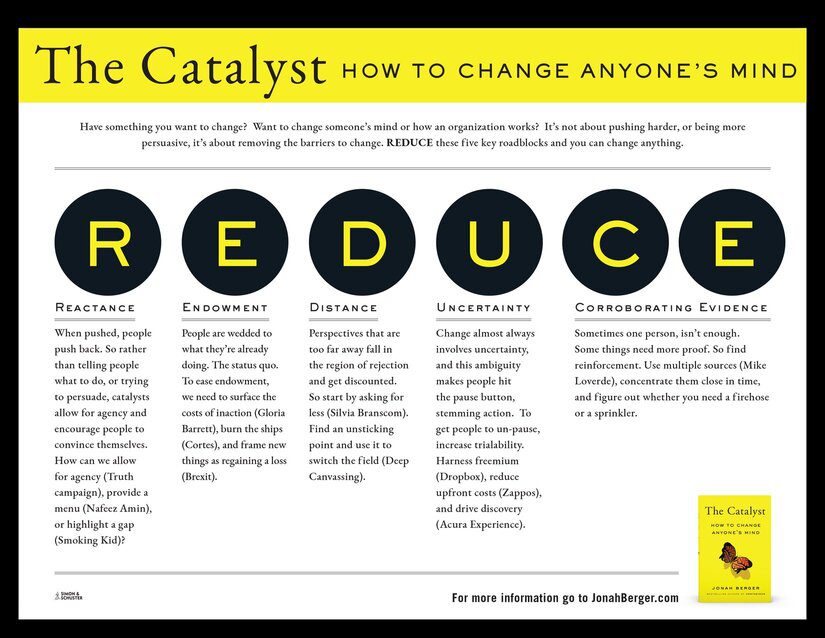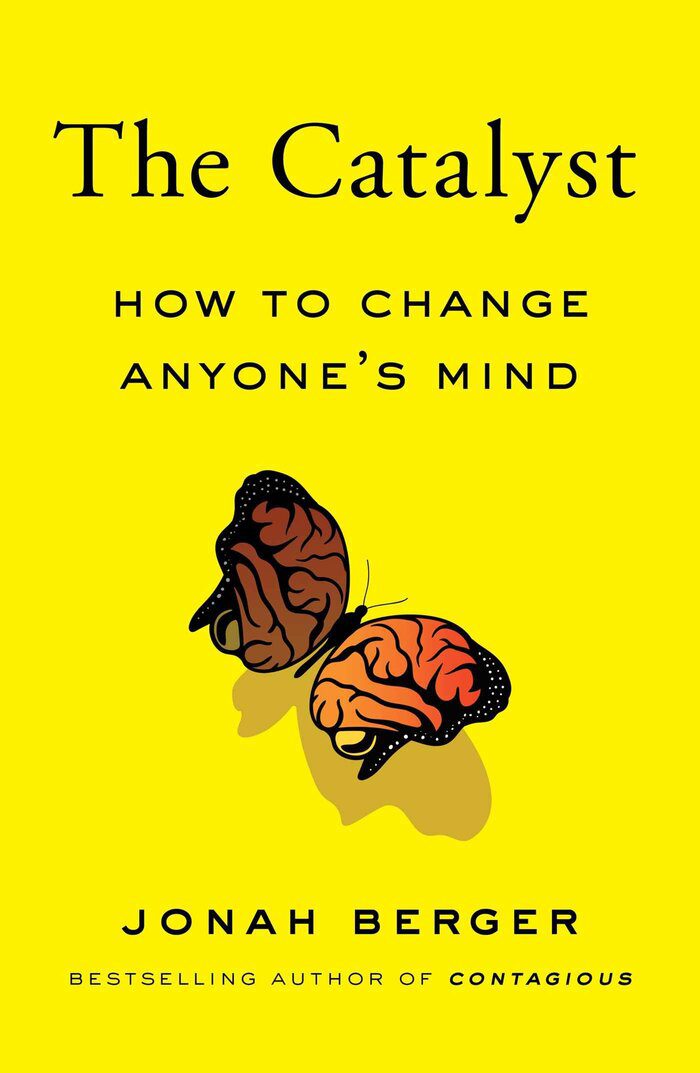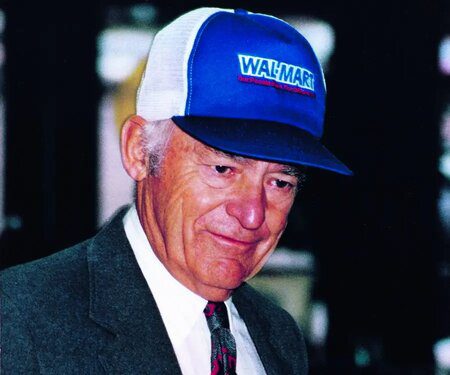“People change when they … Hurt enough that they have to, Learn enough that they want to, and Receive enough that they are able to.” – John C. Maxwell
Print | Kindle(eBook) | Audiobook
The Catalyst by Jonah Berger is a great and transformative book for me personally as I have tendencies of wanting to change people (Messiah Syndrome); for example, whenever I finish a book, watch a documentary, or get exposed to new information, I want to share it with everybody but have come to realize people are at different levels and period in their lives (they change when they are ready). Anytime I want to get frustrated with people and change, I remind myself that first: I might be wrong and I remember the words of Author John C. Maxwell on Change:
“People change when they … Hurt enough that they have to, Learn enough that they want to, and Receive enough that they are able to.” – John C. Maxwell
Berger shares a great framework called REDUCE (Reactance, Endowment, Distance, Uncertainty, and Corroborating Evidence) for effecting change, and I absolutely love it.
The Catalyst: How to Change Anyone’s Mind introduces a revolutionary approach to change. Successful change isn’t about pushing harder or exerting more energy. It’s about removing barriers. Overcoming resistance by reducing friction and lowering the hurdles to action. Discover the five hidden factors that impede change, and how by mitigating them, you can change anything.
Books Theme:
How to overcome inertia, incite action, and change minds—not by being more persuasive, or pushing harder, but by being a catalyst. By removing the barriers to change. Identifying what is blocking or preventing change. And eliminating these obstacles to action.
The book is about finding the parking brakes. Discovering the hidden barriers preventing change. Identifying the root or core issues that are thwarting action and learning how to mitigate them.
Here are my Favourite Takeaways from reading, The Catalyst: How to Change Anyone’s Mind by Jonah Berger:
Catalyst
- To facilitate change, chemists often use a special set of substances. These unsung heroes clean the exhaust in your car and the grime on your contact lenses. They turn air into fertilizer and petroleum into bike helmets. They speed change, enabling molecules that might take years to interact to do so in seconds.
- When we are trying to change someone’s mind, 99 percent of us focus on some version of pushing. “Present facts and evidence,” “Explain my reasons,” and “Convince them” are common refrains. We are so focused on our desired outcome that we’re consumed with how we can push people in that direction. But along the way, we tend to forget about the person whose mind we’re trying to change. And what’s stopping them. Because rather than asking what might convince someone to change, catalysts start with a more basic question: Why hasn’t that person changed already? What is blocking them?”

The book is based on a framework the author called the REDUCE (Reactance, Endowment, Distance, Uncertainty, and Corroborating Evidence) which he called the five horsemen of inertia. Five key roadblocks hinder or inhibit change. The five ways to be a catalyst can be organized into an acronym. Catalysts
- reduce Reactance,
- ease Endowment,
- shrink Distance,
- alleviate Uncertainty, and
- find Corroborating Evidence.
Principle 1: Reactance
Pushing, telling, or just encouraging people to do something often makes them less likely to do it.
When pushed, people push back. Just like a missile defense system protects against incoming projectiles, people have an innate anti-persuasion system. Radar that kicks in when they sense someone is trying to convince them. To lower this barrier, catalysts encourage people to persuade themselves.
- Restriction generates a psychological phenomenon called reactance. An unpleasant state that occurs when people feel their freedom is lost or threatened.
Change is hard
- We persuade and cajole and pressure and push, but even after all that work, often nothing moves. Things change at a glacial pace if they change at all. People like to feel they have control over their choices and actions. That they have the freedom to drive their own behavior.
- When others threaten or restrict that freedom, people get upset. When told they can’t or shouldn’t do something, it interferes with their autonomy. Their ability to see their actions as driven by themselves. So they push back: Who are you to tell me I can’t text while driving or walk my dog on that pristine patch of grass? I can do whatever I want!
While texting while driving might not have even been that attractive originally, threatening to restrict it makes it more desirable.
Solution to Reactance
Allow for Agency
- “To avoid reactance and the persuasion radar, then, catalysts allow for agency. They stop trying to persuade and instead get people to persuade themselves.” To reduce reactance, catalysts allow for agency—not by telling people what to do or by being completely hands-off, but by finding the middle ground. By guiding their path.
Four key ways to do that are:
(1) Provide a menu,
- Try to convince people to do something, and they spend a lot of time counterarguing. Thinking about all the various reasons why it’s a bad idea or why something else would be better. Why they don’t want to do what was suggested.”
But give people multiple options, and suddenly things shift.
(2) ask, don’t tell,
Questions encourage listeners to commit to the conclusion. To behave consistently with whatever answer they gave.
- Rather than taking a predetermined plan and pushing it on people, catalysts do the opposite. They start by asking questions. Visiting with stakeholders, getting their perspectives, and engaging them in the planning process.
(3) highlight a gap,
- People strive for internal consistency. They want their attitudes, beliefs, and behaviors to align. Someone who says they care about the environment tries to reduce their carbon footprint. Someone who preaches the virtues of honesty tries not to tell lies.
- Consequently, when attitudes and behaviors conflict, people get uncomfortable. And to reduce this discomfort, or what scientists call cognitive dissonance, people take steps to bring things back in line.
Highlighting such dissonance, and bringing it to the fore, encourages people not only to see the discord but also to work to resolve it.
(4) start with understanding.
- Before people will change, they have to be willing to listen. They have to trust the person they’re communicating with. And until that happens, no amount of persuasion is going to work.
- Seasoned negotiators don’t start with what they want; they start with whom they want to change. Working to gain insight into where that person is coming from. Comprehending and appreciating that person’s situation, feelings, and motives, and showing them that someone else understands.
Starting with understanding diffuses anti-persuasion radar by making sure the other side gets a chance to say their piece.
Principle 2: Endowment
Change is hard because people tend to overvalue what they have: what they already own or are already doing.
As the old saying goes, if it ain’t broke, don’t fix it. People are wedded to what they’re already doing. And unless what they’re doing is terrible, they don’t want to switch. To ease endowment, or people’s attachment to the status quo, catalysts highlight how inaction isn’t as costless as it seems
- It turns out that once we have something, once we’re endowed with it, we start to become attached to it. And consequently, we value it more. Ownership even increases the perceived value of beliefs and ideas. When something is ours, we value it more.
- In fact, the longer people do or own something, the more they value it. The longer homeowners have lived in a home, for example, the higher the value it over the market price. The more they become attached to it, the harder it becomes to give it up.
Whenever people think about changing, they compare things to their current state. The status quo. And if the potential gains barely outweigh the potential losses, they don’t budge.
Switching Cost
- There are switching costs to changing grocery stores (figuring out where things are), tennis partners (figuring out who will do what), offices (remembering who sits where and where things go), and strategies (overruling past habits). All this makes it easier to just stick with what was done before, even if it isn’t perfect.
To ease Endowment:
(1) surface the cost of inaction,
- When the status quo is terrible, it’s easy to get people to switch. They’re willing to change because inertia isn’t a viable option. If your place is infested with roaches, you have to call an exterminator; the only question is which one to call.
To overcome endowment, then, we need to help people realize the cost of doing nothing—that, rather than being safe or costless, sticking with the status quo actually has a downside.
(2) burn the ships.
- Rather than thinking about whether a given new thing is better than the old one, by helping to take inaction off the table, burning the ships encourages people to set aside the old and instead think about which new thing is worth pursuing.
Principle 3: Distance
Start with a place of agreement and pivot from there to switch the field. Connecting to these parallel directions should move them enough to see the initial topic differently.
People have an innate anti-persuasion system, but even when we just provide information, sometimes it backfires. Why? Another barrier is distance. If new information is within people’s zone of acceptance, they’re willing to listen. But if it is too far away, in the region of rejection, everything flips. Communication is ignored or, even worse, increases opposition.
People search for, interpret, and favor information in a way that confirms or supports their existing beliefs.
- When ideas or information comes in, people compare it to their existing views. They consider and weigh it to understand how it fits with existing beliefs. If it falls within the zone of acceptance, it gets the seal of approval. It’s marked as trustworthy, safe, and dependable. And it shifts people in that direction.
- But if the ideas or information falls in the region of rejection, it faces deeper scrutiny. It’s seen as unreliable, anecdotal, and erroneous, or, even worse, ignored completely. And shifts attitudes in the opposite direction.
Three ways to mitigate distance are to
(1) find the movable middle
- When dealing with issues that people feel strongly about, start by finding the movable middle. Individuals who, by virtue of their existing positions, are more likely to shift because they’re not so far away to begin with.
(2) ask for less
- Agreeing to a small, related ask moved people in the right direction. This meant that the final ask, which once would have been too far away, was now within the zone of acceptance. Because when people move their position on the field, their zones and regions move with them. Consequently, rather than being squarely in the region of rejection, the final ask is now in more people’s zone of acceptance. Which makes them more likely to help
(3) switch the field to find an unsticking point. - Rather than starting with a tough issue that seems divisive (a sticking point), deep canvassing starts with common ground. Something everyone can rally around.
Principle 4: Uncertainty
People are risk-averse. They like knowing what they are getting, and as long as what they are getting is positive, they prefer sure things to risky ones. Even if the risky choice is better, on average.
Change often involves uncertainty. Will a new product, service, or idea be as good as the old one? It’s hard to know for sure, and this uncertainty makes people hit the pause button, halting action. To overcome this barrier, catalysts make things easier to try. Like free samples at the supermarket or test drives at the car dealership, reducing risk by letting people experience things for themselves.
- People dislike uncertainty. Not just a little, like bad weather or spoiled milk or a host of other things they find mildly annoying. No, people really dislike uncertainty. So much so that it has a real, tangible cost. Uncertainty is even worse than certain negative outcomes. Knowing you’ll be late to a meeting certainly feels bad, but wondering whether you’ll make it on time usually feels worse.
Triability
- Trialability is how easy it is to try something. The ease with which something can be tested or experimented with on a limited basis.
You can reduce uncertainty by lowering the barrier to trial. Four key ways to do that are to
(1) harness freemium
Free shipping avoids charging customers for the privilege of trying shoes on. Test drives and renting give people a chance to experience something before having to commit. A drowning simulator helps people experience how difficult it is to survive without a life jacket. Reducing uncertainty and making people more likely to take action.
(2) reduce up-front costs
(3) drive discovery
- Supermarkets hand out free samples of smoked sausage on toothpicks. That not only lowers the barrier to trial for sausage lovers, it also grows the set of people who think about buying sausage in the first place.
(4) make it reversible.
- Money-back guarantees or pay-for-performance contracts work similarly. “Don’t like it? We’ll fix it.” Some lawyers advertise that they don’t get paid if the client doesn’t win. Even airline tickets are covered by a twenty-four-hour return policy. All of which lower uncertainty and reduce inertia, encouraging customers to change their minds from no to yes.
- Want to get people to change? Switch from their usual behavior, choice, or action? Be a catalyst and lower the barrier to trial. Be an ice cream parlor, not a supermarket.
Neophobia is the fear or a dislike of anything new. In animals, the term is used to describe the tendency to avoid unfamiliar objects or situations, and in children it is often used as part of food neophobia, or an avoidance of new foods.
Principle 5: Corroborating Evidence
If one person says you have a tail, you laugh and think they’re crazy. But if three people say it, you turn around to look.
Sometimes one person, no matter how knowledgeable or assured, is not enough. Some things just need more proof. More evidence to overcome the translation problem and drive change. Sure, one person endorsed something, but what does their endorsement say about whether I’ll like it? To overcome this barrier, catalysts find reinforcement. Corroborating evidence.
Pebbles and Boulders
- Changing minds is a bit like trying to lift something on the other end of a seesaw.
- How much weight, or proof, you need depends on how heavy the thing is that you’re trying to move. If you’re trying to lift a pebble, you don’t need much. Add a little evidence and it moves right away. Change happens. But if you’re trying to move a boulder, much more effort is needed. More proof is required before people will change.
When finding corroborating evidence, it’s important to consider who, when, and how:
(1) who else to involve (or which sources are most impactful),
(2) when to space corroborating evidence over time, and
(3) how to best deploy scarce resources when trying to change minds on a larger scale.
Corroborating evidence helps change minds by providing social reinforcement.
- Similarity matters for changing minds, as we know, but it turns out diversity is also important. People were more likely to donate when the prior donors they knew came from separate, independent groups. If one was a family member and another was a coworker, people were more than twice as likely to donate. But if they were two family members or two coworkers, multiple sources didn’t have as much impact.
- When trying to change minds, then, not all proof is equal. Concentrating proof boosts its effectiveness. Trying to increase attention for a new service or important social cause? Make sure that different media hits happen soon after one another so potential supporters hear about it multiple times in a short period.
All the best in your quest to get better. Don’t Settle: Live with Passion.



3 Comments
Pingback: The CAOS Challenge: Launch a new product quickly and cheaply. – Lanre Dahunsi
Pingback: You cannot win an Argument. – Lanre Dahunsi
Pingback: 100 Books Reading Challenge 2020 – Lanre Dahunsi